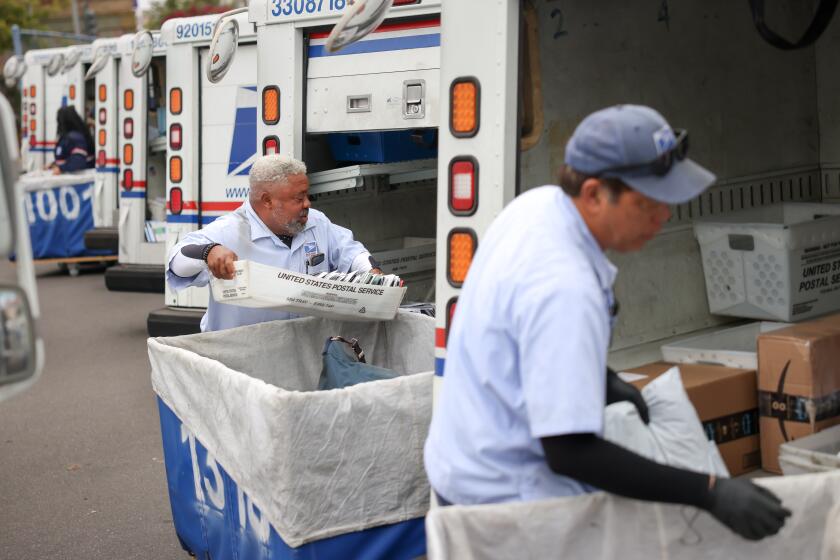Congregations Share More Than Building
- Share via
Colorful prayer shawls and white silk yarmulkes mixed with Sunday-best dress as members of a synagogue and a Christian church literally linked arms to celebrate Rosh Hashana, the Jewish new year.
Haunting calls from sacred rams’ horns summoned members of University Synagogue and Irvine United Church of Christ for the unusual Sunday service. Pastor Fred Plumer, his wife and two members of the synagogue read the opening prayers.
“Here on the pulse of this new day, may you have the grace to look up and out, into your sister’s eyes, and your brother’s face, your country, and say simply, very simply, with hope: Good morning,” read Charron Plumer to murmured approval from the 400 celebrants packed into the hall.
The Christian and Jewish congregations have shared building space for years, but other than occasional joint Thanksgiving services, they have rarely worshiped together. When Rabbi Arnold Rachlis realized that the last day of Rosh Hashana fell on a Sunday this year, he approached Plumer to ask if they could use the hall on Sunday afternoon in addition to the traditional Friday night and Saturday services. Plumer had an even better idea--cancel his second Sunday morning service and invite Rachlis’ congregation to worship then.
“Well then, be our guests and celebrate our New Year with us,” Rachlis said he responded to Plumer.
Both religious leaders made a point of noting that Jesus had been Jewish, and that the roots of Christianity are in Judaism. The reading for the day, the story of God asking Abraham to sacrifice his son Isaac as the ultimate test of faith, was familiar to all.
Church member Kimberly Keilbach of Irvine explained patiently to her son Paul, 8, that they would be turning the pages of the traditional Jewish prayer book from left to right, not right to left.
“This service is new to us, but it’s very old, it’s been practiced for thousands of years,” she whispered to him. “This service is probably the same one that would have been heard by Jesus.”
Lasting more than two hours, twice the usual length of Christian services, the event was marked at times by humor, song and pointed commentary. “Consider it the gift of an extra hour, and don’t let the Jews learn from you!” quipped Rachlis to the Christians in the room.
By the time the heavy parchment scrolls of the Torah--the sacred Hebrew Scripture books--were removed from the wooden ark, an unabashed air of festivity overtook the room. Swaying, clapping and singing, dozens of people followed the scrolls as they were paraded around the hall, then crowded around the pulpit at Rachlis’ invitation to inspect the holy calligraphy.
“It’s a great celebration,” enthused United Church of Christ member Paul Dischner, 46, of Tustin. “What I’m really enjoying about it is the wondrous merging.”
David Hirson of Irvine, a longtime member of the synagogue, agreed. “It’s interesting to hear the explanations of some of the service for the visitors. . . . There were certain parts I’ve never understood, so it’s like a good catch-up for us, too.”
But the mood grew grave when Rachlis explained that the Torah parchment and heavy wooden “trees” or handles, were crafted from pieces of other Torahs that Nazis had tried to destroy during World War II.
“Nazism is not gone today,’ he noted. “There are still people on the margins who hate . . . they hate everybody in this room. But we stand as one against those who would destroy.”
More to Read
Sign up for Essential California
The most important California stories and recommendations in your inbox every morning.
You may occasionally receive promotional content from the Los Angeles Times.










